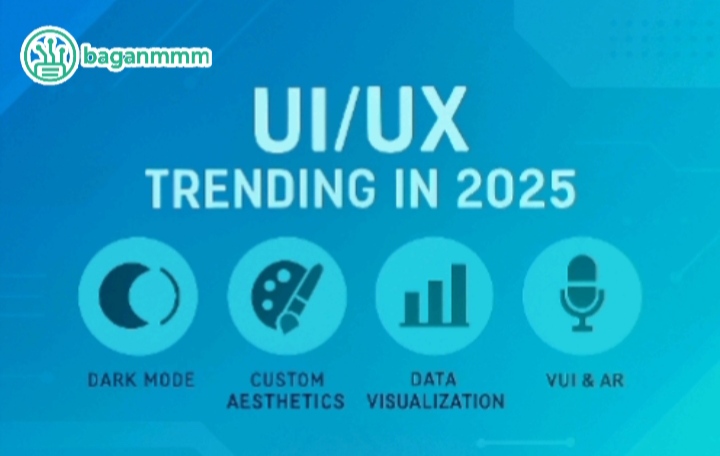Within web development, the highest‑paying area is UI/UX design. Making a website easy to use, visually appealing, and engaging is extremely important, and this is the responsibility of UI/UX designers.

According to the 2025 job market report, UI/UX designers are leading the web development field in terms of salary, earning an estimated $150K to $200K per year.
If you are just starting to learn web development, I recommend choosing the UI/UX path. While front‑end and back‑end developers focus heavily on coding and programming, UI/UX designers must constantly think, research, and stay updated with today’s trends. Their role is to ensure that websites are user‑friendly, visually attractive, and provide a seamless experience.
Just as presentation is important in business, UI/UX is equally important for websites. In fact, UI/UX is the first impression of any website.
If you are interested in UI/UX, this blog will be helpful for you.
What you will learn from this blog:
This blog explains 7 important aspects of UI/UX design, combining my personal experience with today’s latest trends.
1. Hyper-Personalization
Interfaces that automatically adapt to each individual user’s behavior, preferences, device type, location, and even emotional state. By doing so, they make the experience easier and more satisfying for users.
Features
- Real-time layout adjustments
- Personalized product recommendations
- Automatic adaptation of font sizes, color themes, and navigation paths
- AI-driven content prioritization
- Presentations and layouts that follow current trends
Where Should We Use
- E-commerce : Showing different homepage layouts for frequent vs. first-time shoppers
- Education : Adjusting dashboard modules based on learning pace
- SaaS : Reordering tools based on usage frequency
How Important for Websites
Hyper-personalization:
- Increases user engagement
- Reduces bounce rates
- Builds emotional connection
It transforms a generic interface into a tailored experience for each user like walking into a store where everything is already arranged just for you. Because it reflects each user’s unique feelings and interests, it draws more attention to your products and services.
Today, most E-commerce platforms, AI assistants, and social media platforms are already using this feature.
2. Micro-Interactions as Standard
Small animations or feedback loops that guide users through tasks and confirm their actions. These may seem minor, but for experienced users they are very important. Adding such animations makes the experience feel smoother and more emotionally engaging. Because they provide precise cues, they also help reduce user errors.
Features
- Button hover effects
- Validation cues in form fields (error/success indicators)
- Haptic feedback for swipe gestures
- Progress indicators during loading
- Adjustments based on internet connection status
Where Should We Use
- Fintech : Confirming successful transactions with subtle animations
- Healthcare apps : Nudging users to complete daily check-ins
- Messaging platforms : Typing indicators and message delivery status
- Enterprise-level apps : Frequently used to improve workflow clarity
How Important for Websites
Micro-interactions:
- Make interfaces feel alive
- Reduce friction for users
- Improve clarity and add delight, especially in repetitive tasks
By 2025, they are no longer optional — they are expected as a standard. In fact, most Google apps already incorporate these kinds of interactions.
3. AI-Assisted UI Behavior
Interfaces that study user behavior and automatically adjust without requiring manual customization. They observe and remember user patterns, then create an environment that feels tailored to the user’s preferences.
Features
- Predictive menus and shortcuts that anticipate user needs
- Smart toolbars that change automatically based on task context
- Auto-sorting content according to importance
Where Should We Use
- Design tools : Suggesting layout templates based on past projects
- CRM platforms : Highlighting important leads based on customer interaction history
- Writing apps : Adjusting formatting options automatically according to writing style
- Shopping apps : Displaying related purchases and complementary items together
How Important for Websites
- Reduces decision fatigue for users
- Speeds up workflows
- Helps surface new ideas
It’s like having a silent co-pilot that predicts what you’ll need and rearranges your cockpit automatically. Many modern apps already use this feature especially in E-commerce, AI assistants, no-code app builders, and social apps.
4. Immersive Scrolling & Layered Depth
Scroll-triggered animations, parallax effects, and layered transitions that create a sense of motion and depth. This provides users with a visually refreshing experience.
Features
- Scroll-based storytelling
- Depth layering using blur, shadow, and motion
- Section reveals with cinematic transitions
Where Should We Use
- Portfolios : Guiding users through a visual narrative
- Product launches : Creating immersive landing pages
- Travel sites : Simulating journeys with layered visuals
- Movie sites : Presenting movie summaries with scroll-based animations
How Important for Websites
This technique transforms static pages into engaging experiences:
- Encourages exploration
- Keeps users engaged longer in storytelling-driven interfaces
- Makes information delivery faster, more dynamic, and more interesting
This feature isn’t entirely new some websites have used it in the past. For example, the Now You See Me movie poster website applied this technique.
5. Mobile-First Minimalism
Designing interfaces with mobile constraints in mind, prioritizing clarity, speed, and essential actions.
Features
- Bold typography and strong iconography
- Simplified navigation (bottom tabs, swipe gestures)
- Reduced clutter and lower cognitive load
- Emphasis on clarity and compact design
Where Should We Use
- Food delivery : One-tap ordering and reordering
- Banking : Quick balance checks and transfers
- Fitness apps : Streamlined workout tracking
- Education : Step-by-step study flows
How Important for Websites
With mobile usage dominating today, minimalism is not just aesthetic it’s functional:
- Ensures easy usability for all users
- Provides faster load times
- Improves accessibility on small screens
- Creates a more personal, user-friendly experience since it’s designed with mobile as the base.
6. Modular UI Systems
Design systems built on reusable components that ensure consistency across platforms and speed up development. Flutter’s UI strategy is based on this system. Since one UI element does not depend on another, errors are reduced and maintenance becomes easier.
Features
- Component libraries (buttons, cards, modals)
- Token-based theming (colors, spacing, typography)
- Cross-platform compatibility
- Content-based theming
Where Should We Use
- SaaS platforms : Consistent UI across web, mobile, and desktop
- Enterprises : Unified design across all internal tools
- Agencies : Rapid prototyping for different clients
- Music platforms
- Movie platforms
How Important for Websites
- Reduce design debt
- Improve scalability
- Enable teams to build faster while maintaining brand integrity
The main advantage of this system is that it speeds up developer time and ensures consistent UI across multiple platforms. As a result, maintenance and documentation become much easier.
7. Context-Aware Dark Mode
A dark mode that adapts automatically to user context, not just system settings. You could call it the next level of dark mode.
Features
- Time-based theme switching
- Ambient light detection (adjusting based on surrounding light)
- Fatigue-aware contrast adjustments
Where Should We Use
- Reading apps : Gradually dimming the interface in the evening
- Productivity tools : Switching to dark mode during long sessions
- Health platforms : Reducing eye strain for sensitive users
- Movie platforms
How Important for Websites
Dark mode today is not just a toggle it has become a wellness feature.
Context-aware dark mode shows empathy toward users and enhances accessibility.
Some users also use dark mode for privacy reasons. In today’s digital landscape, dark mode has become a main option in almost every app and website.
Final Thought
By now, I hope you’ve understood some core principles of UI/UX and current trends. This blog is based on my own experience, so it doesn’t fully cover everything about UI/UX, but it should still be helpful in parts.
Today, users access content across many different devices, which creates real challenges for UI/UX designers. The seven points outlined above will help address these challenges. In short, UI/UX requires more thinking and more creativity—keep exploring, and stay aligned with user trends.
Alice is the visionary behind Baganmmm Tech, a platform he founded with a passion for demystifying the complex world of technology. As the Lead Technologist, he's often found in his home lab – a cozy, wire-filled sanctuary where ideas are born and code is meticulously crafted. His infectious enthusiasm and knack for explaining intricate concepts make him the go-to expert for everything from web development to emerging tech trends.
